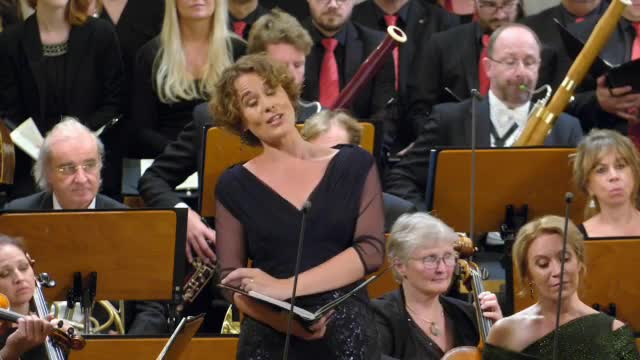Andrew Manze, like many early music specialists, had a broad and in many ways academic upbringing. Having read Classics at Cambridge, he then studied violin at London’s Royal Academy of Music and the Royal Conservatory of The Hague, under Simon Standage and Marie Leonhardt. This gave him the chance to join the Amsterdam Baroque Orchestra, leading it between 1989 and 1993, and soon after he began his association with harpsichordist Richard Egarr, resulting in the release of a number of recordings. Manze also formed La Romanesca at around the same time with harpsichordist John Tell and lutenist Nigel North, with whom he recorded and performed a variety of seventeenth-century music.
Also known as a conductor/director, Manze has worked with The Academy of Ancient Music and The English Concert; in the field of period performance he has performed with La Stravaganza (Cologne), the Philharmonia Baroque Orchestra (San Francisco) and the Orchestra of the Age of Enlightenment. His interest in rhetorical and historical aspects of music performance has led him to apply similar principles to much later music, including that of the Second Viennese School.
Manze’s performance style in some of the examples selected here reveals very much what one has come to expect of so-called Baroque violin playing: a clean, almost ascetic tone quality, garnished by the richness and softness of gut strings, a mainly senza-vibrato tone (although enlivened, occasionally, by a credible reconstruction of the kinds of wide, slow and very obvious ornamental vibrati as described in eighteenth-century violin treatises) and a bright, clean attack. Thus his 1997 Bach E major Concerto and 2001 Handel Sonata in D are interesting historically-informed recordings. The Biber Rosary Sonatas (2004) are equally fine and manage to communicate the exalted state implied by the subject matter through a spaciousness of tempi and lightness of sound.
By contrast, Tartini’s ‘Devil’s Trill’ (1997) and Pandolfi Mealli’s Op. 3 No. 2 (1994) reveal a more experimental, even reckless side to Manze’s musicianship, with jazz-like elements of rhythmic realisation and tonal adaptation (including portamenti and vibrati in the Pandolfi Mealli that sound remarkably similar to those of Stéphane Grappelli!). Manze, who readily acknowledges the influence of jazz on his interpretations, proves via this process that he is free of the charges of academic superiority and scholarly dullness often levelled at many early music specialists. In the process his interest in rhetoric and dramatic declamation is conveyed powerfully. Some listeners may find the finale of his Tartini sonata dramatic to the point of grotesque, but there is a sense that this portrays, evocatively, the dramatic intents of the sonata as a piece of performance art. Perhaps Manze seeks to remind us, as Harnoncourt suggests in his 1988 text, Baroque Music Today, that eighteenth-century music exists beyond the mere pursuit of the beautiful.
Like almost all period performers to date, Manze has yet to hit upon a convincing recipe for delivering classical and Romantic repertoire in a manner that accords sufficiently with contemporaneous precepts. His achievements in the sphere of period-instrument performance of earlier music are, however, most effective and exciting.
© Naxos Rights International Ltd. — David Milsom (A–Z of String Players, Naxos 8.558081-84)
| Title | |
| MOZART, W.A.: Mass No. 18 / MOZART, L.: Litaniae Lauretanae de BVM (Salzburg Bach Choir, Camerata Salzburg, Manze) | |

|
MOZART, W.A.: Mass No. 18 / MOZART, L.: Litaniae Lauretanae de BVM (Salzburg Bach Choir, Camerata Salzburg, Manze)
Composers:
Mozart, Leopold -- Mozart, Wolfgang Amadeus
Artists:
Bruns, Benjamin -- Camerata Salzburg -- Kielland, Marianne Beate -- Manze, Andrew -- Salzburg Bach Choir -- Sampson, Carolyn -- Williams, Douglas
Label/Producer: Belvedere edition |
